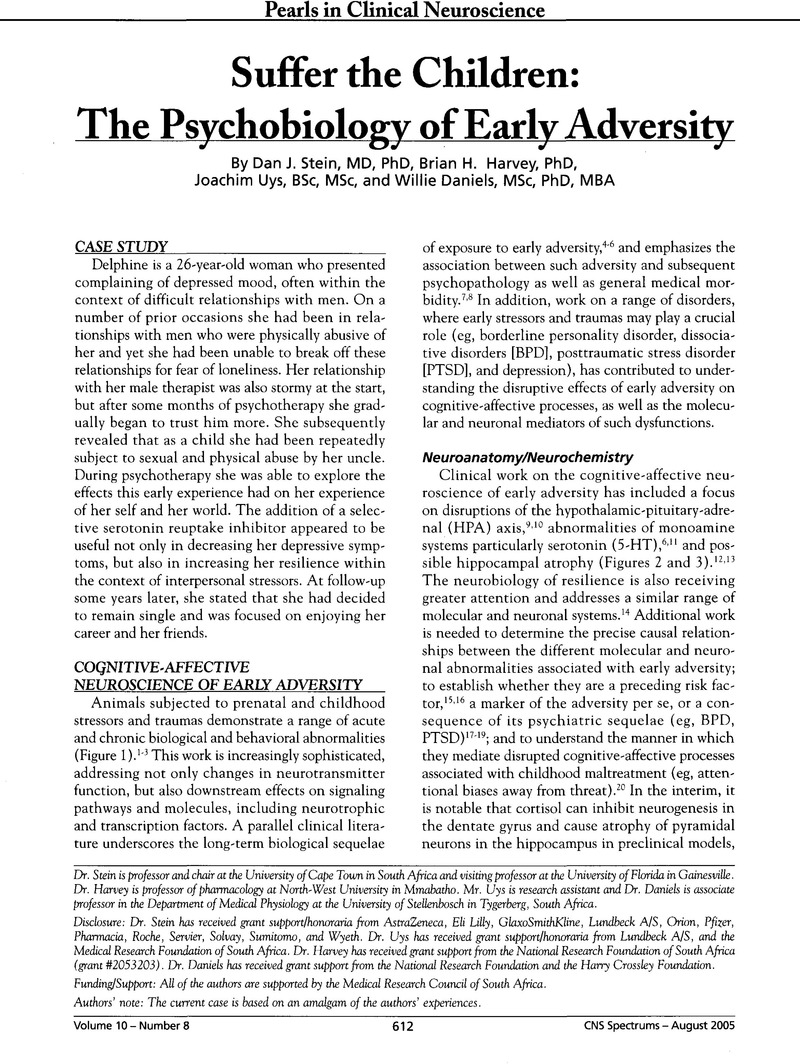Crossref Citations
This article has been cited by the following publications. This list is generated based on data provided by Crossref.
Stein, Dan J.
2006.
Evolutionary theory, psychiatry, and psychopharmacology.
Progress in Neuro-Psychopharmacology and Biological Psychiatry,
Vol. 30,
Issue. 5,
p.
766.
Meyer, Dixie
and
Paul, Robert
2011.
A Cross-National Examination of Marriage and Early Life Stressors as Correlates of Depression, Anxiety, and Stress.
The Family Journal,
Vol. 19,
Issue. 3,
p.
274.
Ganasen, Keith A.
and
Stein, Dan J.
2012.
Psychobiological Approaches for Anxiety Disorders.
p.
5.
Stein, Dan J.
2013.
Understanding Somatic Symptom Disorder: The Role of Translational Neuroscience.
Biological Psychiatry,
Vol. 74,
Issue. 9,
p.
637.
Stein, Dan J
He, Yanling
Phillips, Anthony
Sahakian, Barbara J
Williams, John
and
Patel, Vikram
2015.
Global mental health and neuroscience: potential synergies.
The Lancet Psychiatry,
Vol. 2,
Issue. 2,
p.
178.
Rudd, Kristen L.
Alkon, Abbey
Abrams, Barbara
and
Bush, Nicole R.
2021.
Infant weight-for-length gain associated with autonomic nervous system reactivity.
Pediatric Research,
Vol. 90,
Issue. 2,
p.
472.
Şener, Beyza
and
Düşünceli, Betül
2024.
Evlilik Kaygısının Bağlanma Stillerine Göre İncelenmesi.
Ege Bilimsel Araştırmalar Dergisi,
Vol. 7,
Issue. 1,
p.
54.



